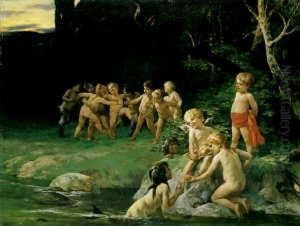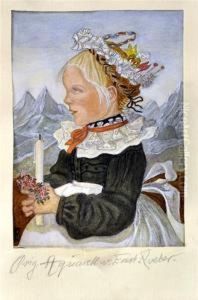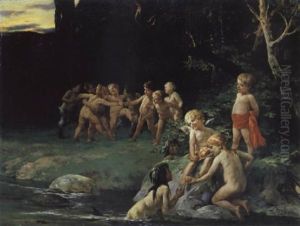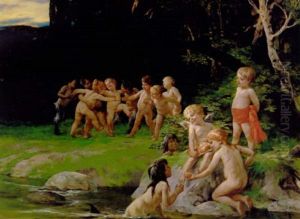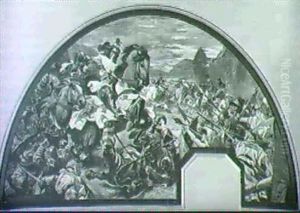Ernst Roeber Paintings
Ernst Roeber was a notable figure in the art world, born in 1849 in Königsberg, Prussia (now Kaliningrad, Russia). His life spanned a period of significant change in Europe, witnessing the unification of Germany, the rise of industrialization, and significant developments in the arts. Roeber's contributions to the art world are often recognized within the context of these historical transformations, as he navigated through the evolving landscapes of artistic expression and societal change.
Roeber's artistic journey began in his hometown, where he was initially exposed to the rich cultural and artistic heritage of Prussia. He pursued his passion for art through formal education, studying at various prestigious institutions. His style evolved over time, reflecting the influences of different art movements of the 19th and early 20th centuries. Roeber was known for his versatility, exploring different genres including landscape, portrait, and historical painting, but he is perhaps best remembered for his mastery in historical scenes, where he skillfully captured the essence and drama of moments from the past.
Throughout his career, Ernst Roeber actively participated in the art community, contributing to exhibitions and engaging with other artists. His works were appreciated for their detailed realism, emotional depth, and technical precision. Despite the changing tastes and styles of the art world, Roeber remained committed to his artistic vision, adapting while also staying true to his roots in traditional painting techniques.
Roeber's legacy is marked by his commitment to capturing the human experience through his art. His works continue to be studied and admired for their historical significance and artistic merit. Ernst Roeber passed away in 1921, leaving behind a body of work that continues to resonate with art enthusiasts and historians alike. Though not as widely known today outside specialist circles, Roeber's contributions to the art world during a time of significant change and development remain an important part of the historical record of European art.
